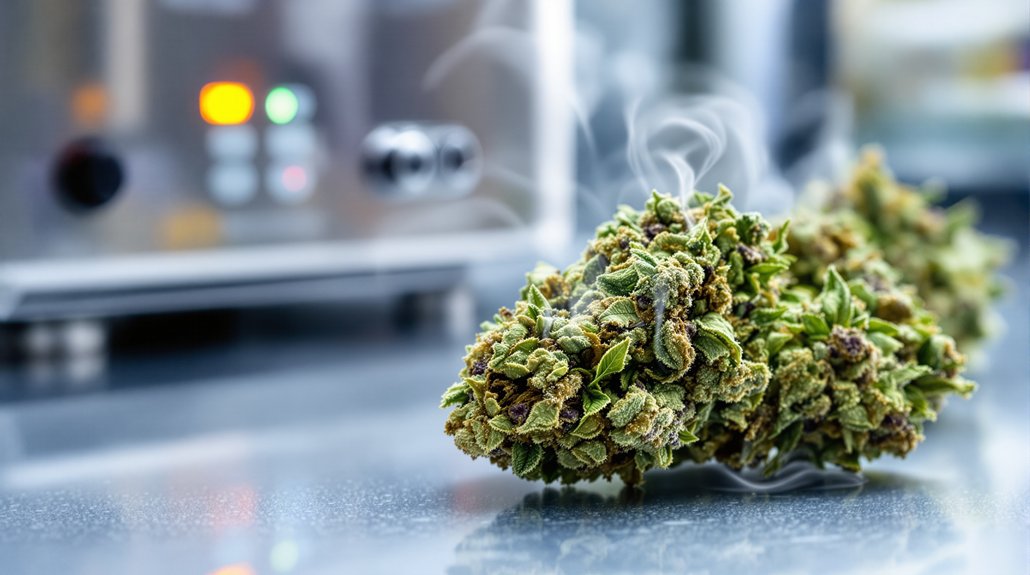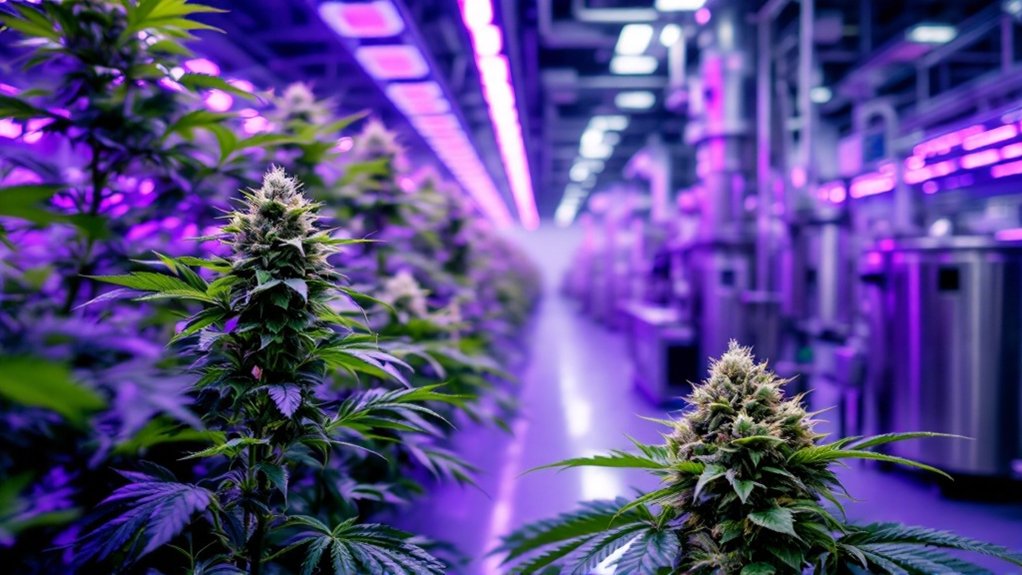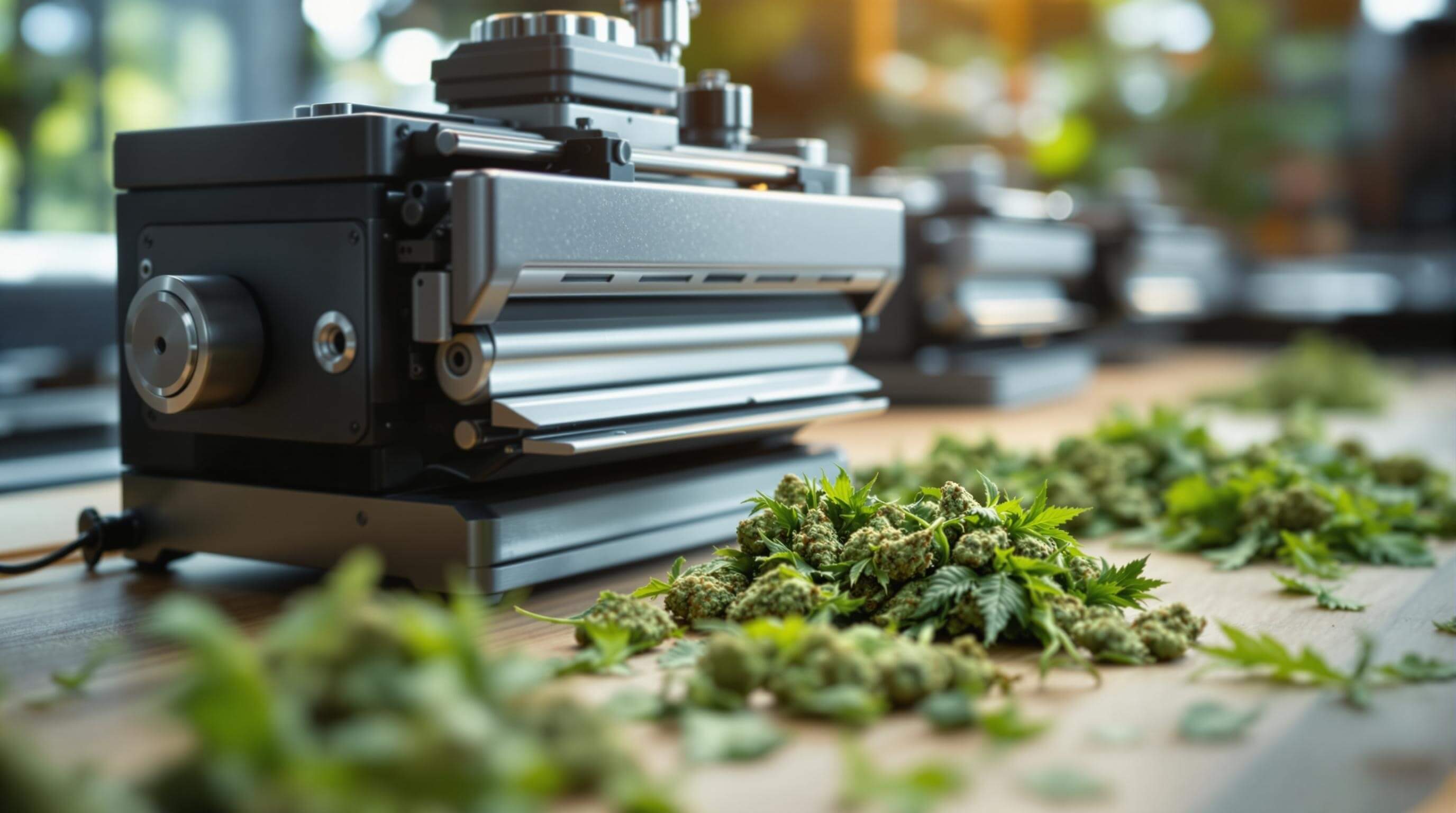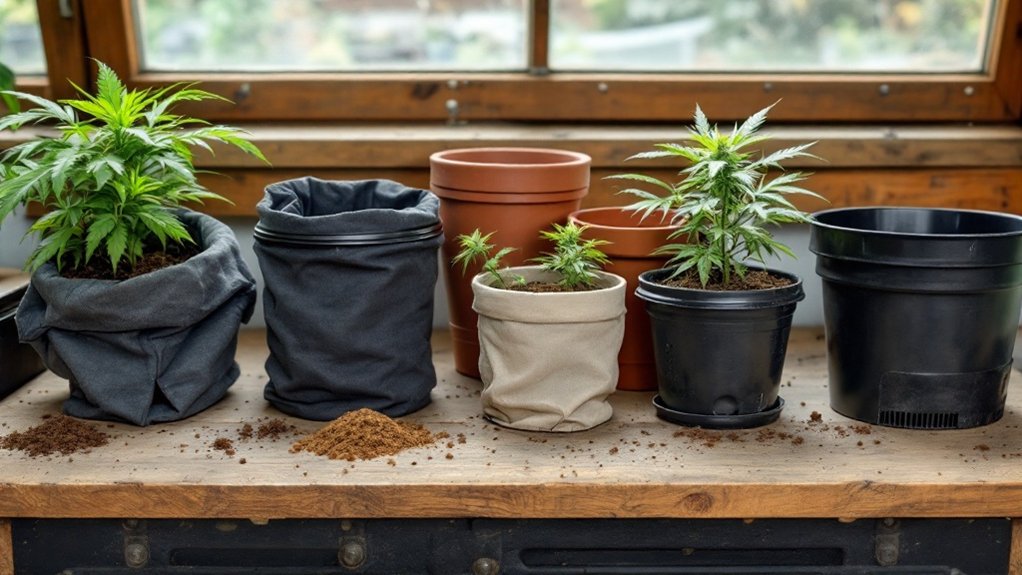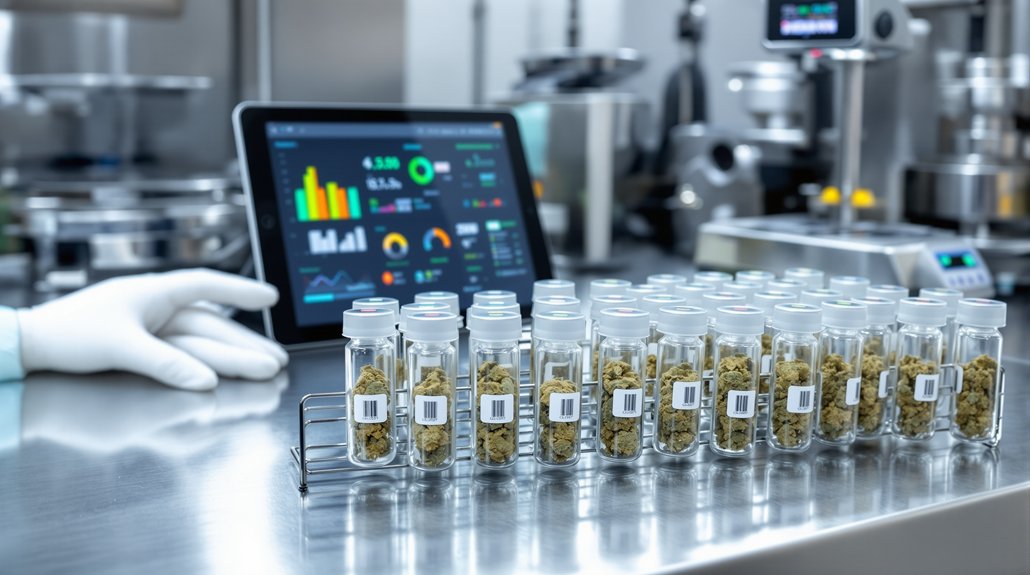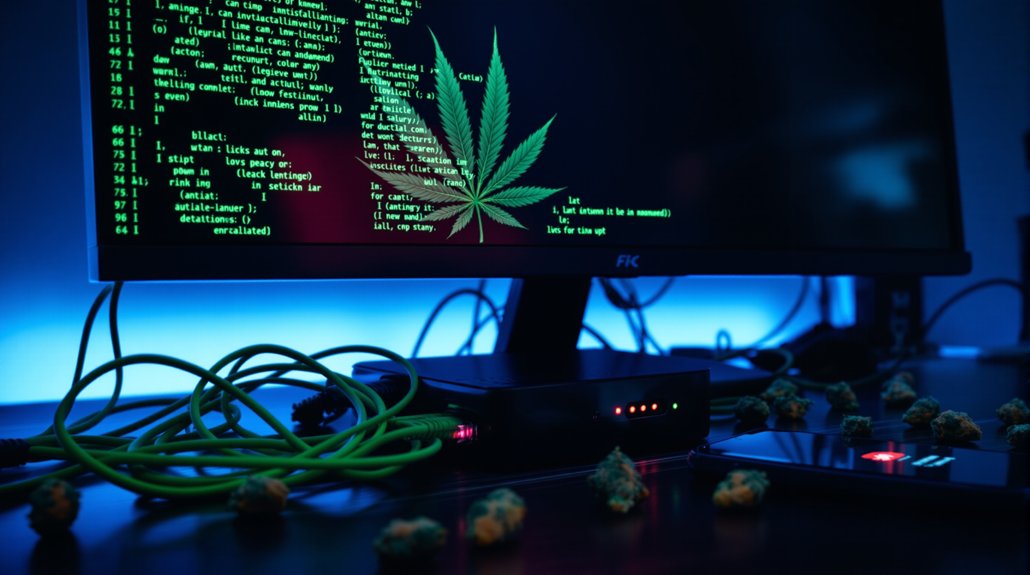Radio-frequency remediation technology effectively eliminates mold contamination in cannabis while maintaining THC potency through precise electromagnetic heating. The process targets water molecules within mold spores, generating internal heat that destroys pathogens without compromising cannabinoid profiles. Studies demonstrate up to 99.9% effectiveness in eliminating mold while preserving therapeutic properties and terpene profiles. This non-ionizing, chemical-free approach operates through controlled temperature parameters that guarantee complete mold destruction without denaturing cannabis compounds. Understanding the technical mechanisms reveals why this method outperforms traditional alternatives.
How RF Technology Eliminates Mold While Preserving Cannabis Quality
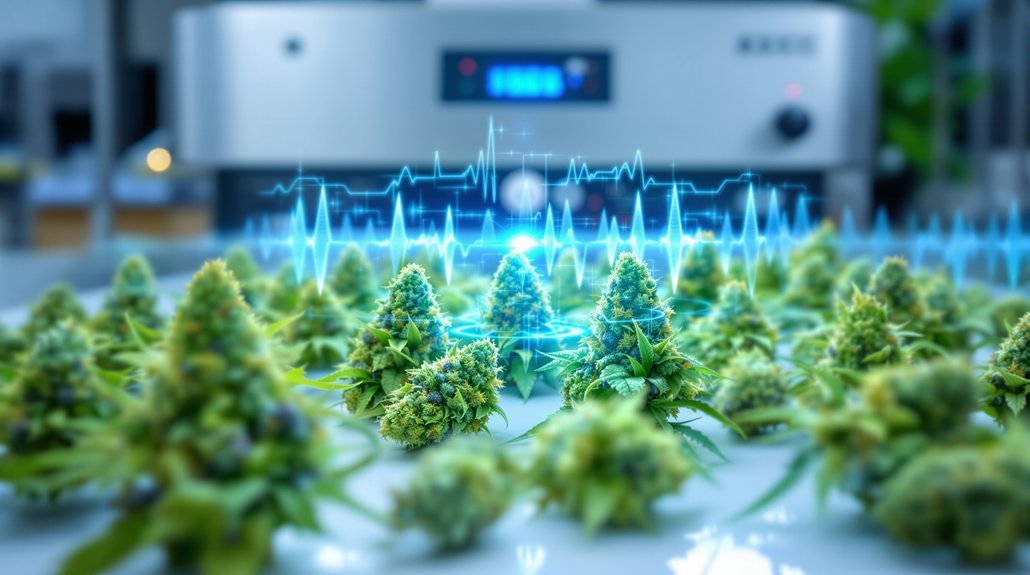
Radio frequency technology represents a breakthrough approach to mold elimination that addresses one of the cannabis industry’s most pressing challenges: removing dangerous contaminants while maintaining the therapeutic and commercial value of the product.
This innovative process utilizes radio frequency electromagnetic waves that penetrate cannabis material and generate internal heat throughout the plant matrix. Unlike surface treatments, RF energy targets water molecules within the cannabis, causing rapid molecular vibration that creates heat levels lethal to mold spores while preserving plant integrity. Much like how integrated pest management combines multiple control strategies, RF technology offers a comprehensive solution to cannabis contamination.
The technology operates through precisely controlled temperature parameters, ensuring complete mold destruction without compromising cannabinoid content or terpene profiles. Studies demonstrate that RF remediation maintains total THC potency, with customized process parameters optimized for each cannabis batch. This chemical-free, non-ionizing approach eliminates contaminants without harsh irradiation or denaturing agents, preserving the product’s flavor, aroma, and therapeutic properties. The treatment achieves a 99.9% effective pass rate for microbial testing while maintaining the visual appeal and commercial quality of cannabis products. RF technology has been proven safe through over a decade of use in the food industry before being adapted for cannabis applications.
RF Remediation Performance Compared to Alternative Decontamination Methods
When evaluating decontamination methods for cannabis, RF remediation demonstrates superior performance across multiple critical metrics compared to traditional alternatives. RF technology achieves up to 99.9% effectiveness in eliminating mold and pathogens while preserving THC potency and cannabinoid profiles. Unlike X-ray and gamma irradiation, which require extensive regulatory oversight and safety protocols, RF uses non-ionizing energy that reduces compliance hurdles and consumer concerns.
Traditional chemical and steam methods introduce moisture risks and longer processing times, while RF maintains minimal terpene loss and preserves aroma profiles. Processing speed represents another significant advantage, with RF systems treating up to 20 pounds in under 15 minutes. This efficiency creates data-driven management that optimizes production and ensures consistent quality throughout the supply chain. The bulk-batch capability allows entire harvests to undergo treatment in single cycles, creating operational efficiency that chemical and thermal alternatives cannot match. RF remediation provides scalable solutions that can grow with cannabis operations of all sizes.
Outdoor cultivation operations face particular challenges with wind carrying contaminants that can introduce mold spores from external sources, making effective remediation technology essential for meeting regulatory requirements.
FAQ
How Much Does RF Remediation Equipment Cost for Small-Scale Cannabis Operations?
RF remediation equipment for small-scale cannabis operations requires significant initial investment, with entry-level commercial systems starting around $340,000 for models like the Ziel RFX. These machines typically process 160 pounds per eight-hour shift, which may exceed small operators’ daily volumes.
Operating costs can include approximately $2.88 per pound in electricity plus $24,000 annual maintenance contracts. The high throughput capacity often results in underutilized equipment for smaller operations.
What Are the Specific Temperature Ranges Used During RF Treatment Processes?
RF treatment processes for cannabis remediation typically operate within a narrow temperature window of 60°C to 70°C. This range effectively eliminates over 99% of common molds while preserving cannabinoid content.
Temperatures exceeding 70°C risk degrading THC potency and terpene profiles through volatilization. Some generic applications use lower ranges of 55°C to 61°C, but cannabis protocols favor the higher end for thorough mold destruction. Precise temperature control prevents product damage during decontamination.
Can RF Remediation Be Performed Multiple Times on the Same Batch?
RF remediation can be performed multiple times on the same batch if initial treatments fail to achieve regulatory compliance. The technology’s bulk-batch capability and non-ionizing process allow repeated cycles without significant cannabinoid degradation. Studies confirm THC and CBD levels remain stable across multiple treatments.
Equipment like Ziel’s APEX machines offer programmable, repeatable operation with high uptime. However, RF doesn’t provide complete sterility, so additional cycles may be necessary for persistent contamination issues.
Which States Currently Require or Allow RF Remediation for Commercial Cannabis?
Currently, no states explicitly require RF remediation for commercial cannabis operations. However, multiple states allow RF technology as an approved decontamination method.
Michigan, California, Oregon, Oklahoma, and Arizona permit RF remediation alongside other non-chemical treatments like ozone and irradiation. These states focus on compliance outcomes rather than mandating specific technologies, allowing cultivators to choose remediation methods that meet microbial standards while preserving product quality and potency.
How Long Does a Typical RF Remediation Cycle Take to Complete?
RF remediation cycle times vary substantially based on equipment and batch size. The Ziel APEX 7 system completes cycles in approximately 14 minutes per batch, while the RFX system processes 160 pounds over 8 hours, averaging 30 minutes per 10-pound batch. Commercial units like the RFC Model 5500 achieve up to 100 pounds per hour.
Cycle duration depends on moisture content, flower density, and target microbial reduction levels.
Looking for more information about commercial growing? Check out our Guide to Cannabis Cultivation: Technology & Innovation.
